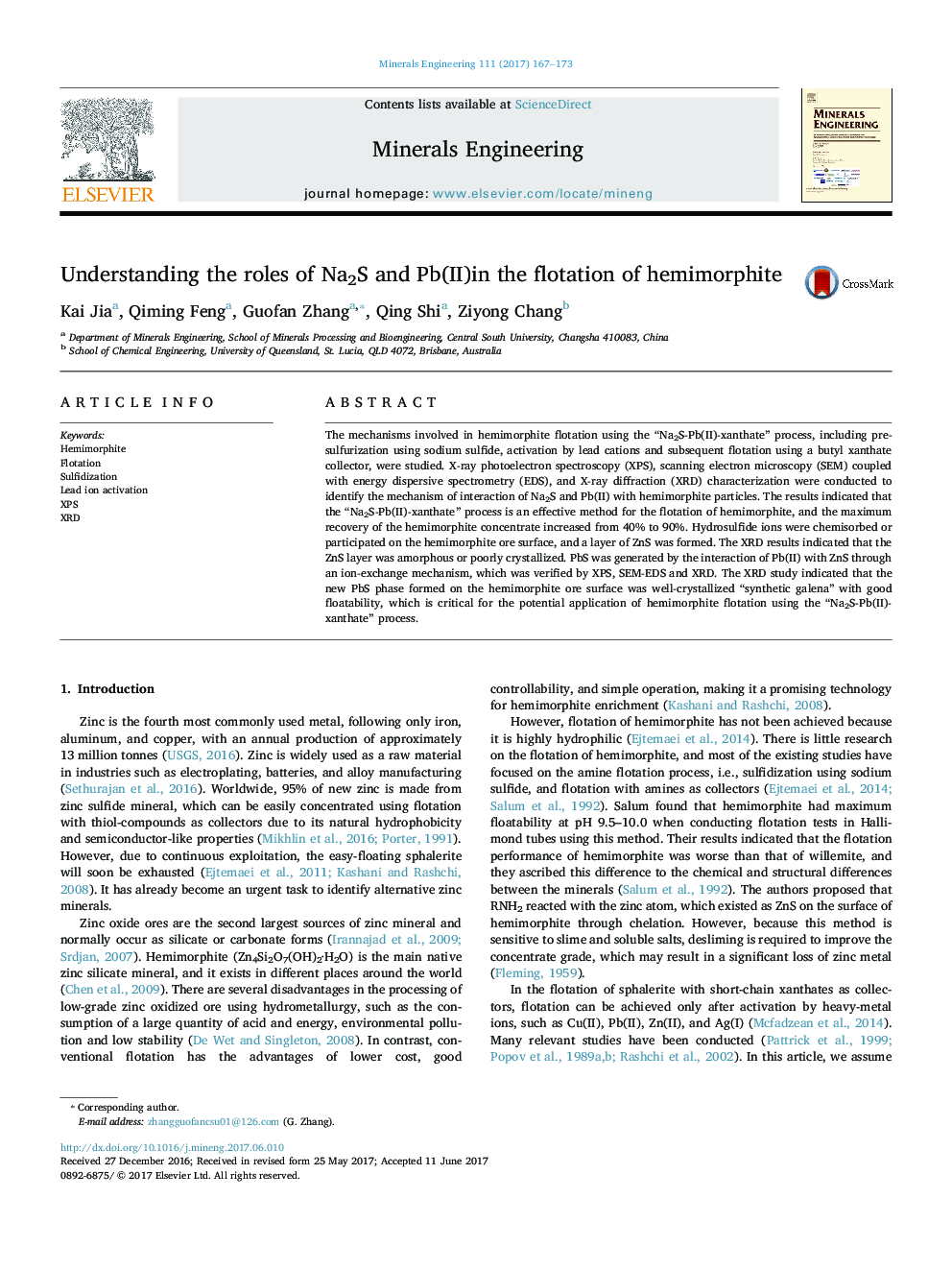| Article ID | Journal | Published Year | Pages | File Type |
|---|---|---|---|---|
| 4910178 | Minerals Engineering | 2017 | 7 Pages |
Abstract
The mechanisms involved in hemimorphite flotation using the “Na2S-Pb(II)-xanthate” process, including pre-sulfurization using sodium sulfide, activation by lead cations and subsequent flotation using a butyl xanthate collector, were studied. X-ray photoelectron spectroscopy (XPS), scanning electron microscopy (SEM) coupled with energy dispersive spectrometry (EDS), and X-ray diffraction (XRD) characterization were conducted to identify the mechanism of interaction of Na2S and Pb(II) with hemimorphite particles. The results indicated that the “Na2S-Pb(II)-xanthate” process is an effective method for the flotation of hemimorphite, and the maximum recovery of the hemimorphite concentrate increased from 40% to 90%. Hydrosulfide ions were chemisorbed or participated on the hemimorphite ore surface, and a layer of ZnS was formed. The XRD results indicated that the ZnS layer was amorphous or poorly crystallized. PbS was generated by the interaction of Pb(II) with ZnS through an ion-exchange mechanism, which was verified by XPS, SEM-EDS and XRD. The XRD study indicated that the new PbS phase formed on the hemimorphite ore surface was well-crystallized “synthetic galena” with good floatability, which is critical for the potential application of hemimorphite flotation using the “Na2S-Pb(II)-xanthate” process.
Related Topics
Physical Sciences and Engineering
Chemical Engineering
Chemical Engineering (General)
Authors
Kai Jia, Qiming Feng, Guofan Zhang, Qing Shi, Ziyong Chang,
